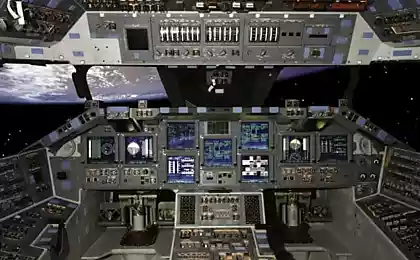1704
About Space
In this photo galleries collected pictures somehow connected with the cosmos that have been made over the past month and a half.

Improved Hubble Space Telescope took a picture of the "bruise" in the nebula of Jupiter on July 23. Astronomers believe that a dark spot appeared, when earlier this month comet crashed into a huge planet. This is the first large-format camera picture of the telescope Hubble, which was installed during the flight into space in May. (NASA, ESA, H. Hammel (SSI), Jupiter Impact Team)
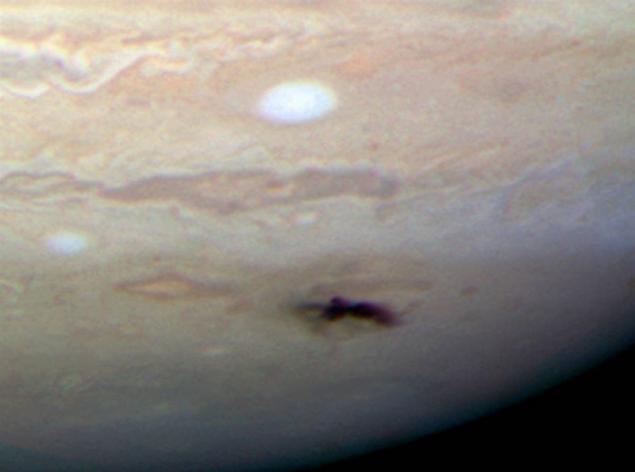
On the morning of July 22 a large part of China and the Pacific shadow fell during unusually long solar eclipse. These images from the Japanese geostationary satellite MTSAT show the Earth at 8:30 am local time in Taiwan (left), and then an hour later during a solar eclipse (right). (WebGMS-MTSAT / GMS / NASA)
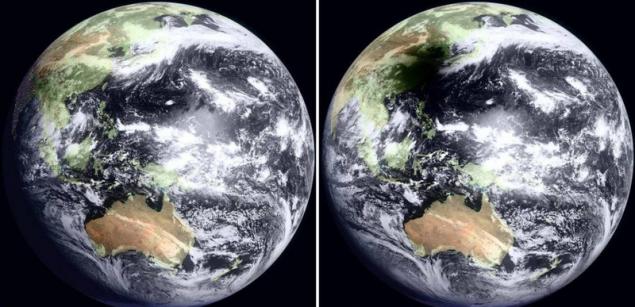
Thousands of people gathered along the Ganges River in Varanasi, India town to look at the total solar eclipse that occurred on July 22. Dark disk of the moon, the sun is completely closed, surrounded by a thin halo of the solar corona. (Pedro Ugarte / AFP - Getty Images)
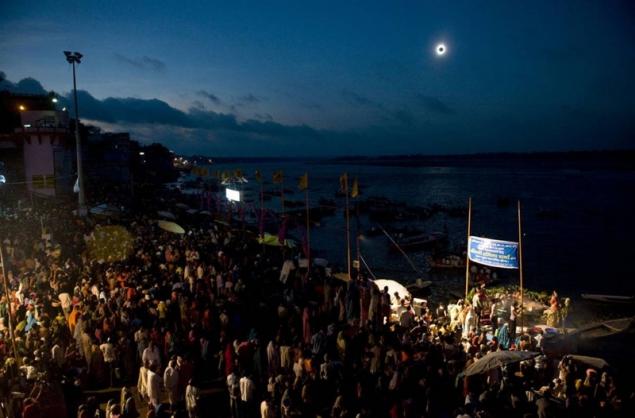
Astronaut space shuttle «Endeavour» Tom Marshbern runs on the International Space Station during a space flight on 27 July. The ship «Endeavour» sets the last piece of the Japanese orbiting laboratory during its 16-day mission. 13 astronauts gathered in the complex station, setting a record for the largest crowds in space. (NASA)
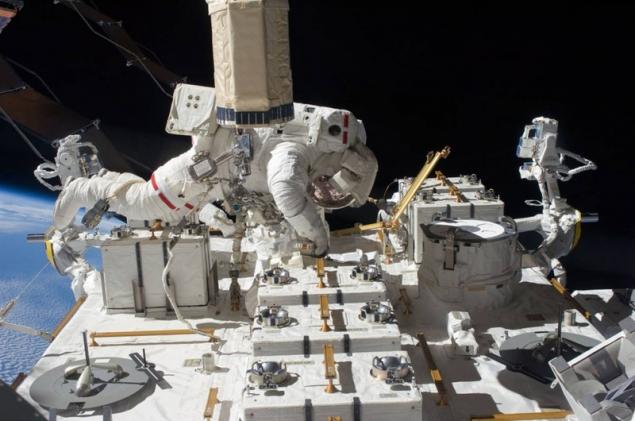
Known under the informal name "Nebula bubble", this planetary nebula in the constellation Cygnus (officially known as the PN G75.5.7) was discovered by an amateur astronomer Dave Yurasevichem in 2008. This picture was taken using a 4-meter telescope June 19, 2009. (Univ. Of Alaska-Anchorage / WIYN / NOAO / AURA / NSF)
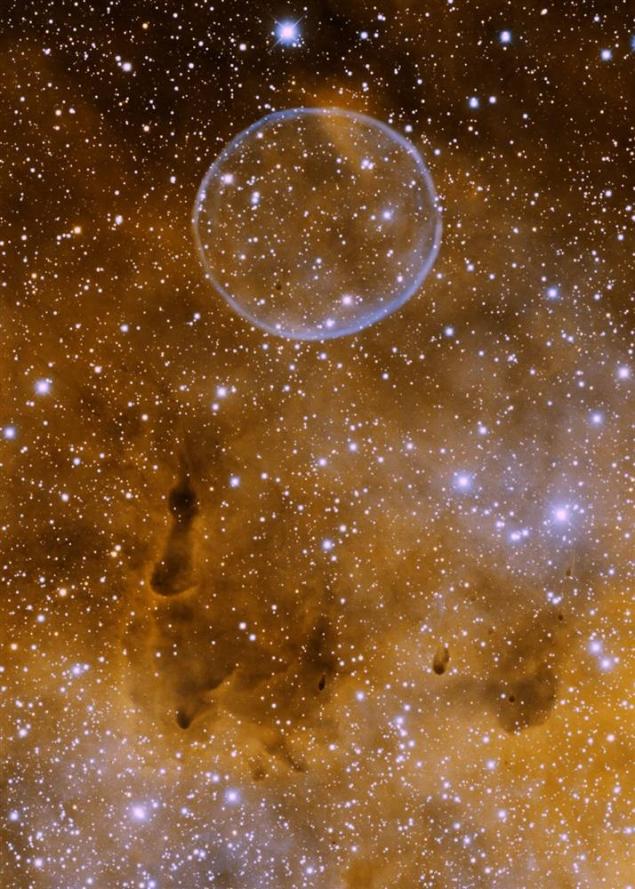
Picture taken on June 14 with the International Space Station, shows part of the basin of the Colorado Plateau, known as the «Waterpocket Fold». Depression is a geological formation consisting of layers of sedimentary rocks with a gentle bend one way, like a carpet on the stairs. (NASA)

Stephen Quintet - a compact group of galaxies discovered about 130 years ago and is located about 280 million light years from Earth. This image, which was published on July 9, combines a visible light image (using the Canada-France-Hawaii Telescope) and by X-rays (from Chandra). Blue stripe in the center of the image is a blast of X-rays that have arisen due to the collapse of galaxies. (NASA / CXC / CfA / CFHT)

Astrophotographer Thierry Legault took this picture of the International Space Station and the docked space shuttle to it «Endeavour», flies on a background of the solar disk on July 26, the view from Orleans, France. The picture was taken with a telescope-refractor Takahashi TOA-150. Other pictures published on the website Lego Astrophoto.fr. (Thierry Legault / Look at Sciences)

This image fragments exploding star, known as supernova remnant 1E 0102.2-7219, or shortly «E0102» - transmits data NASA Chandra Observatory. E0102 is about 190,000 light-years away in the Small Magellanic Cloud, one of the closest galaxies to the Milky Way. The picture was taken on July 23 in honor of the 10th anniversary of the opening of Chandra. (NASA / CXC / STScI)

Module NASA Max Launch Abort System (MLAS) rises on a column of flame and clouds on July 8 during a test run in the space agency Wallops Flight Facility in Virginia. MLAS is an alternative module, which is under study, as NASA thinks all ways to protect future astronauts in an emergency startup. (NASA)
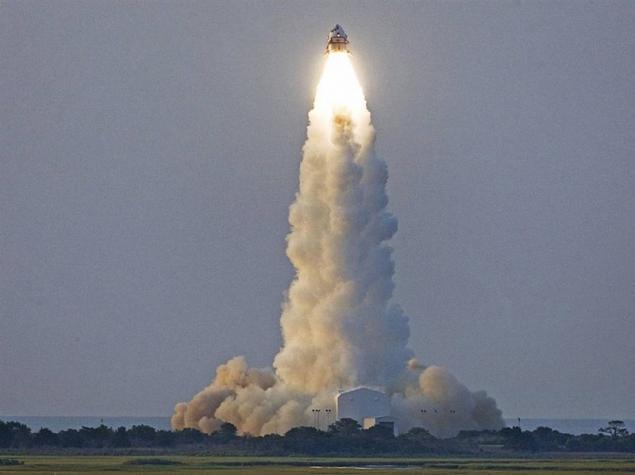
Team members Mars rover Scott Maxwell, Pauline Hwang and Kim Lichtenberg prepare test rover for the session on July 9, which aims to find the best way to pour soft ground in a specially built "dumpster" in the laboratory NASA. The results of this test will help engineers to create a strategy for the rover NASA, which was in a difficult situation on Mars. (NASA / JPL-Caltech)
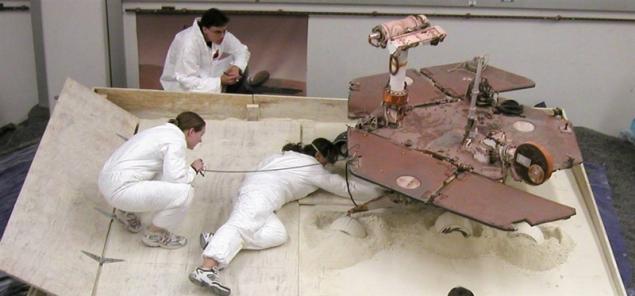
How does the Martian dirt: This mosaic of images from the optical system Surface Stereo Imager, mounted on the module Phoenix, shows a portion of the deck of the spacecraft after he brought samples of Martian soil. Different components of this image (made in approximately true color) were made on different days during the five-month mission module Phoenix in the Martian Arctic. Was the picture edited on July 2nd. (NASA / JPL-Caltech / Univ. Of Arizona)
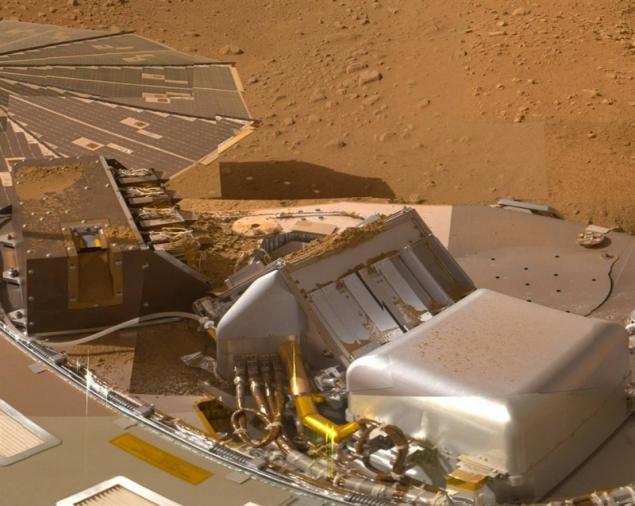
This image of the southern polar region of Mars is part of a series of photographs taken interplanetary station NASA Mars Reconnaissance Orbiter, in an attempt to find a module, or at least his parachute. The module was lost after entered the atmosphere of Mars in December 1999. The remains of the module can be covered with dust and ice, making it difficult to search. This photo was taken on July 3 and released on the 8th. (NASA / JPL / University of Arizona)

This image, made from station Europe and released on July 24 shows in perspective one of the largest canyons of the Red Planet. Canyon Ma'adim Vallis has craters, lava flows and tectonic features. This prospective survey was done using data stereo high-resolution cameras. (ESA / DLR / FU Berlin (G. Neukum)

Cosmic rays from the Milky Way galaxy effectively accelerated after an exploding star, as shown in this picture June 25, taken with a large telescope European Southern Observatory and NASA's Chandra. Scientists studied the color codes radiation from supernova remnant RCW 86, located at a distance of 8200 light years from Earth, to see how this "super-accelerator". They discovered that the shock wave created by the explosion star moves at a speed of 1 to 3% of the speed of light. (ESO / NASA / CXC)

SpaceX Falcon 1 rocket lifted off from the island in the Pacific Ocean on July 14, taking with him into space Malaysian satellite RazakSAT. This launch was the first success for the company SpaceX (CA), which was able to unload into orbit its scientific weight. The company was founded SpaceX millionaire Elon Musk for easy access to space. (SpaceX)
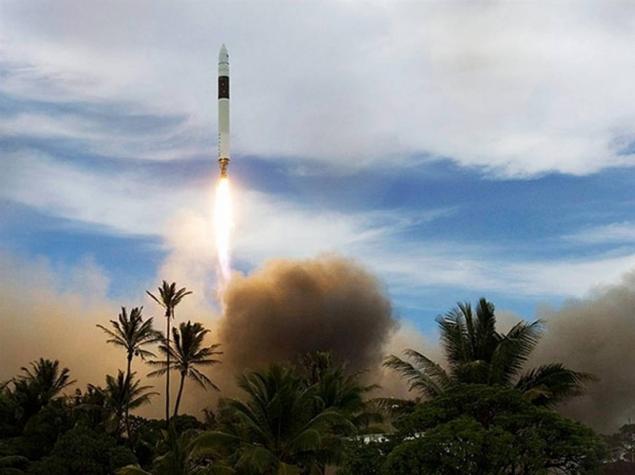
via

Improved Hubble Space Telescope took a picture of the "bruise" in the nebula of Jupiter on July 23. Astronomers believe that a dark spot appeared, when earlier this month comet crashed into a huge planet. This is the first large-format camera picture of the telescope Hubble, which was installed during the flight into space in May. (NASA, ESA, H. Hammel (SSI), Jupiter Impact Team)

On the morning of July 22 a large part of China and the Pacific shadow fell during unusually long solar eclipse. These images from the Japanese geostationary satellite MTSAT show the Earth at 8:30 am local time in Taiwan (left), and then an hour later during a solar eclipse (right). (WebGMS-MTSAT / GMS / NASA)

Thousands of people gathered along the Ganges River in Varanasi, India town to look at the total solar eclipse that occurred on July 22. Dark disk of the moon, the sun is completely closed, surrounded by a thin halo of the solar corona. (Pedro Ugarte / AFP - Getty Images)

Astronaut space shuttle «Endeavour» Tom Marshbern runs on the International Space Station during a space flight on 27 July. The ship «Endeavour» sets the last piece of the Japanese orbiting laboratory during its 16-day mission. 13 astronauts gathered in the complex station, setting a record for the largest crowds in space. (NASA)

Known under the informal name "Nebula bubble", this planetary nebula in the constellation Cygnus (officially known as the PN G75.5.7) was discovered by an amateur astronomer Dave Yurasevichem in 2008. This picture was taken using a 4-meter telescope June 19, 2009. (Univ. Of Alaska-Anchorage / WIYN / NOAO / AURA / NSF)

Picture taken on June 14 with the International Space Station, shows part of the basin of the Colorado Plateau, known as the «Waterpocket Fold». Depression is a geological formation consisting of layers of sedimentary rocks with a gentle bend one way, like a carpet on the stairs. (NASA)

Stephen Quintet - a compact group of galaxies discovered about 130 years ago and is located about 280 million light years from Earth. This image, which was published on July 9, combines a visible light image (using the Canada-France-Hawaii Telescope) and by X-rays (from Chandra). Blue stripe in the center of the image is a blast of X-rays that have arisen due to the collapse of galaxies. (NASA / CXC / CfA / CFHT)

Astrophotographer Thierry Legault took this picture of the International Space Station and the docked space shuttle to it «Endeavour», flies on a background of the solar disk on July 26, the view from Orleans, France. The picture was taken with a telescope-refractor Takahashi TOA-150. Other pictures published on the website Lego Astrophoto.fr. (Thierry Legault / Look at Sciences)

This image fragments exploding star, known as supernova remnant 1E 0102.2-7219, or shortly «E0102» - transmits data NASA Chandra Observatory. E0102 is about 190,000 light-years away in the Small Magellanic Cloud, one of the closest galaxies to the Milky Way. The picture was taken on July 23 in honor of the 10th anniversary of the opening of Chandra. (NASA / CXC / STScI)

Module NASA Max Launch Abort System (MLAS) rises on a column of flame and clouds on July 8 during a test run in the space agency Wallops Flight Facility in Virginia. MLAS is an alternative module, which is under study, as NASA thinks all ways to protect future astronauts in an emergency startup. (NASA)

Team members Mars rover Scott Maxwell, Pauline Hwang and Kim Lichtenberg prepare test rover for the session on July 9, which aims to find the best way to pour soft ground in a specially built "dumpster" in the laboratory NASA. The results of this test will help engineers to create a strategy for the rover NASA, which was in a difficult situation on Mars. (NASA / JPL-Caltech)

How does the Martian dirt: This mosaic of images from the optical system Surface Stereo Imager, mounted on the module Phoenix, shows a portion of the deck of the spacecraft after he brought samples of Martian soil. Different components of this image (made in approximately true color) were made on different days during the five-month mission module Phoenix in the Martian Arctic. Was the picture edited on July 2nd. (NASA / JPL-Caltech / Univ. Of Arizona)

This image of the southern polar region of Mars is part of a series of photographs taken interplanetary station NASA Mars Reconnaissance Orbiter, in an attempt to find a module, or at least his parachute. The module was lost after entered the atmosphere of Mars in December 1999. The remains of the module can be covered with dust and ice, making it difficult to search. This photo was taken on July 3 and released on the 8th. (NASA / JPL / University of Arizona)

This image, made from station Europe and released on July 24 shows in perspective one of the largest canyons of the Red Planet. Canyon Ma'adim Vallis has craters, lava flows and tectonic features. This prospective survey was done using data stereo high-resolution cameras. (ESA / DLR / FU Berlin (G. Neukum)

Cosmic rays from the Milky Way galaxy effectively accelerated after an exploding star, as shown in this picture June 25, taken with a large telescope European Southern Observatory and NASA's Chandra. Scientists studied the color codes radiation from supernova remnant RCW 86, located at a distance of 8200 light years from Earth, to see how this "super-accelerator". They discovered that the shock wave created by the explosion star moves at a speed of 1 to 3% of the speed of light. (ESO / NASA / CXC)

SpaceX Falcon 1 rocket lifted off from the island in the Pacific Ocean on July 14, taking with him into space Malaysian satellite RazakSAT. This launch was the first success for the company SpaceX (CA), which was able to unload into orbit its scientific weight. The company was founded SpaceX millionaire Elon Musk for easy access to space. (SpaceX)

via













